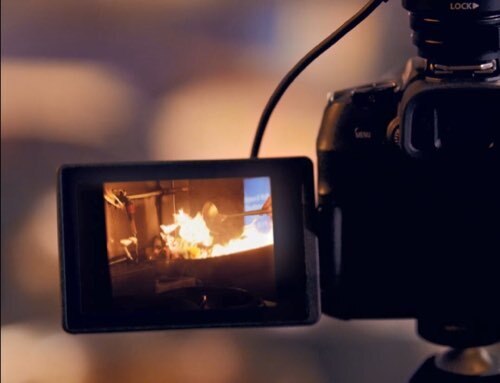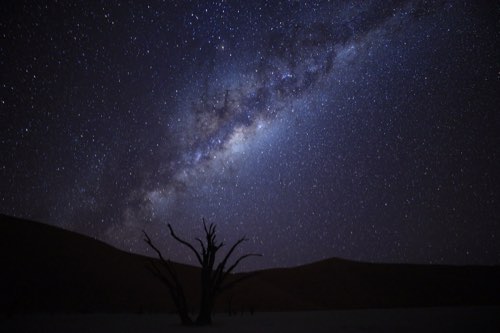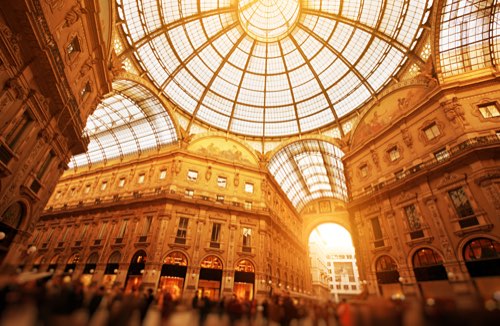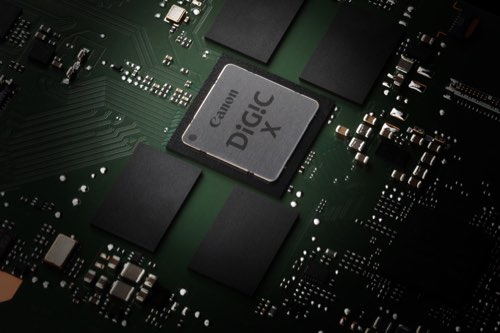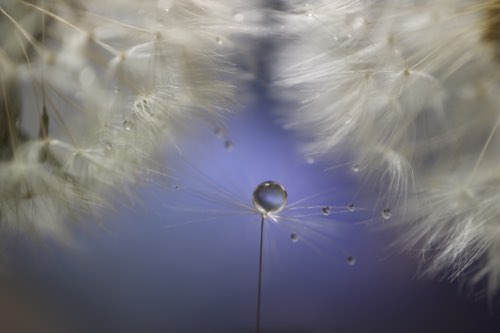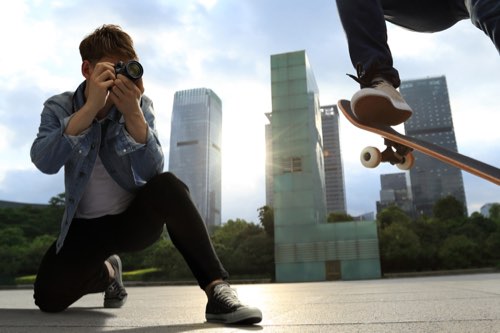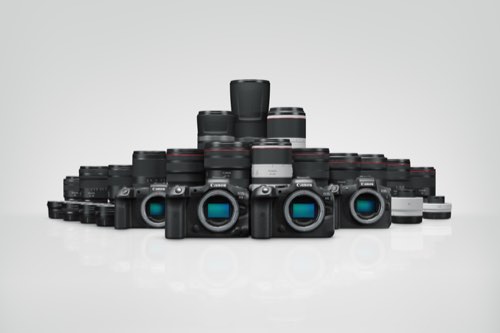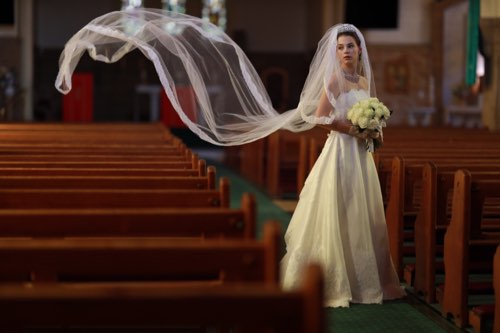Lens Review: RF28mm f/2.8 STM vs. RF35mm f/1.8 Macro IS STM in Travel and Street
Fast and portable prime lenses in moderately wide focal lengths like 28mm or 35mm (full-frame equivalent) make excellent walkaround lenses. They’re less likely to weigh you down, have a field of view that’s easy to compose with, and their bright maximum apertures easily handle darker locations and night scenes. In this article, we compare how the RF28mm f/2.8 STM and RF35mm f/1.8 Macro IS STM fare in real life. It should give you an idea of which one to pick! Scroll to the end for an eye-opening composition tip. (Reported by: Maiko Fukui, Digital Camera Magazine)

Checkpoint #1: Portability
How easily do they fit into any everyday bag?

Above: The lenses mounted on the EOS R8
When you’re out exploring the streets, regardless of whether you’re in your hometown or a foreign country, chances are you’d prefer to remain inconspicuous by not using an obvious camera bag.

For travel and walkarounds, I usually carry just 1 to 2 lenses in a normal everyday bag, protected by a padded camera pouch. The picture shows my favourite tote bag: it’s easy to take out the camera, lightweight, and sized nicely enough to stay out of the way in a crowd.
Verdict: Both are convenient, but the RF28mm f/2.8 STM earns extra points for its pancake design
Both the RF28mm f/2.8 STM and RF35mm f/1.8 Macro IS STM are small enough to fit easily into my camera pouch. However, the RF28mm f/2.8 STM is much flatter—it barely protrudes beyond the EOS R8’s grip. This makes it less likely to hit or get caught onto something in your bag, or when you’re going around with the camera slung over your shoulder or around your neck.
Checkpoint #2: Focal length
Which focal length is easier to use?
The RF28mm f/2.8 STM’s field of view is wider, whereas the RF35mm f/1.8 Macro IS STM’s field of view is closer to what you see. However, how much difference that makes depends on the scene.
When subjects are further away

RF28mm f/2.8 STM

RF35mm f/1.8 Macro IS STM
When shooting wider scenes with subjects that are further away, the 7mm difference in focal length doesn’t make much of a difference. Framing is equally easy on both lenses.
Close-up subjects

RF28mm f/2.8 STM

RF35mm f/1.8 Macro IS STM
The difference in the image becomes obvious when shooting close-ups: notice how the building in the background looks bigger on the 35mm lens. If you examine the outlines of the red post box carefully, you will also notice that the RF28mm f/2.8 STM renders them with stronger contrast, whereas they are finer on the RF35mm f/1.8 Macro IS STM.
Verdict: It depends on your style and preferences
The RF35mm f/1.8 Macro IS STM is good for faithful, straightforward snaps of scenes you see. However, the wider 28mm field of view might feel more familiar to those used to shooting with smartphone cameras.
While not directly related to the focal length, you might also want to consider the lens renderings. Images from the RF28mm f/2.8 STM seem to have sharper, harder outlines and more aberrations. The resulting look resembles instant film, which happens to be quite trendy nowadays! Meanwhile, the RF35mm f/1.8 Macro IS STM provides a simpler, more natural aesthetic.
Checkpoint #3: Bokeh (shallow focus effects)
How different is the bokeh?
The RF28mm f/2.8 STM’s maximum aperture is f/2.8, while that of the RF35mm f/1.8 Macro IS STM is f/1.8. That’s 1 1/3 stops’ difference, which doesn’t seem too big…or does it?
Compare the images below.
RF28mm f/2.8 STM @ f/2.8

RF35mm f/1.8 Macro IS STM @ f/2.8

RF35mm f/1.8 Macro IS STM @ f/1.8

If you recall, a longer focal length intensifies bokeh. That’s why the longer RF35mm f/1.8 Macro IS STM produces a more blurred-out background than the RF28mm f/2.8 STM at the same f/2.8 aperture setting.
Verdict: Better bokeh with the RF35mm f/1.8 Macro IS STM
If bokeh is a huge reason why you’re getting a prime lens, I would recommend the RF35mm f/1.8 Macro IS STM. At f/2.8, it already shows a distinct advantage over the RF28mm f/2.8 STM; wide-open at f/1.8, the background becomes buttery smooth.
On the other hand, the RF28mm f/2.8 produces decent bokeh considering its compact size, and should be sufficient for users where bokeh quality isn’t as high priority.
Checkpoint #4: Close-up shooting
Do both lenses let you shoot close enough?
With its 0.5x half-macro capabilities, the RF35mm f/1.8 Macro IS STM is clearly better equipped for close-up shooting. You’ll easily be able to fill the frame with details of food and flowers.
While the RF28mm f/2.8 STM doesn’t let you get as close, it does let you get close enough for a decent food photo that also captures the surrounding context, like the food example below.
Flowers

RF28mm f/2.8 STM

RF35mm f/1.8 Macro IS STM
The differences in close-up capability and bokeh are obvious when photographing flowers. You can get much closer to the flower with the RF35mm f/1.8 Macro IS STM.
Food

RF28mm f/2.8 STM

RF35mm f/1.8 Macro IS STM
The RF28mm f/2.8 STM lets you get close enough to capture food in front of you with some context, all from a comfortable seated position. Note the slight perspective distortion, inevitable because of the wider angle.
| RF28mm | RF35mm | |
| Closest focusing distance | 0.23m | 0.17m |
| Maximum magnification | 0.17x | 0.5x |
Verdict: RF35mm f/1.8 Macro IS STM gives more close-up flexibility
The RF28mm f/2.8 STM has its strengths, but the RF35mm f/1.8 Macro IS STM gives you more creative options.
You may also be interested in:
3 Lenses to Start Food Photography
Author’s pick: RF35mm f/1.8 Macro IS STM*
*Note: this is the author’s opinion and does not reflect the views of Canon.

Why the RF35mm f/1.8 Macro IS STM?
I feel the RF35mm f/1.8 Macro IS STM offers the best fit for my shooting style. I prefer an angle-of-view that is closer to my natural vision, and I love the beautiful, buttery bokeh that the lens creates.
To me, the RF35mm f/1.8 Macro IS STM also offers more creative possibilities. The RF28mm f/2.8 STM’s wider angle of view produces images like paintings, whereas the RF35mm f/1.8 Macro IS STM straddles the middle ground: images can look wide angle or somewhat telephoto depending on your composition and aperture setting decisions, leaving much more room to play with. It’s a wonderful choice both as an everyday lens that lives on your camera and a travel lens that lets you do more with less gear.
What I liked about the RF28mm f/2.8 STM
Autofocusing on the RF28mm f/2.8 STM felt more seamless, and its corner-to-corner sharpness was beyond expectation what you would normally expect on a pancake lens. Portability is also where it excels—it’s so compact and lightweight, you should be able to shoot all day with it without feeling any strain. You wouldn’t go wrong picking it as your travel lens.
Last words
You’ll probably like the RF28mm f/2.8 STM better if you want crisp, contrasty images similar to those from a smartphone camera. But for more creative versatility such as when shooting close-ups, creating bokeh, and playing with shooting distances, pick the RF35mm f/1.8 Macro IS STM.
Composition technique: Framing secondary subjects for the focal length
A secondary subject can elevate your photos of food or decorative items. The next time you decide to include them in the frame, think of how you can take advantage of the focal length in your composition. It’s not just about the field of view!
Here‘s a set of examples to illustrate. In both examples, our main subject is the cup of coffee.

RF28mm f/2.8 STM
I composed this image for 28mm. With its wider field of view, you can include more context (secondary subjects) in front of and behind the main subject so that the image tells a story.

RF35mm f/1.8 Macro IS STM
35mm limits what you can include in the picture, so you’ll have to approach composition differently. Here, I’ve made use of the lens’ bokeh capabilities to put the foreground and background objects out of focus. This simplifies the surroundings, drawing attention to the steam. You can almost smell the wafting coffee aroma.
Pro advice: When using a prime lens, if you can’t get something to fit in the frame, don’t force it. Work on creating the best composition with what you have. You’ll have a lot more fun!
Thinking of expanding your lens collection? Here’s some useful information to help you decide:
Prime Lens or Zoom Lens: Which Should I Buy?
10 Concepts to Know Before Buying Your Second Lens
RF Lenses vs EF Lenses: What's the Difference and How to Decide?
About the Author
A monthly magazine that believes that enjoyment of photography will increase the more one learns about camera functions. It delivers news on the latest cameras and features and regularly introduces various photography techniques.
Published by Impress Corporation
Osaka-born and Tokyo-based, Maiko Fukui was formerly a student of photographer-cinematographer Hideto Uchiike. She is now an editorial and commercial photographer specialising in people and celebrity portraiture, travel, and lifestyle photography. With tiny everyday emotions as her seeds of inspiration, she aims to capture moments that sparkle while preserving their energy and atmosphere.
Instagram
@caby_maiko








